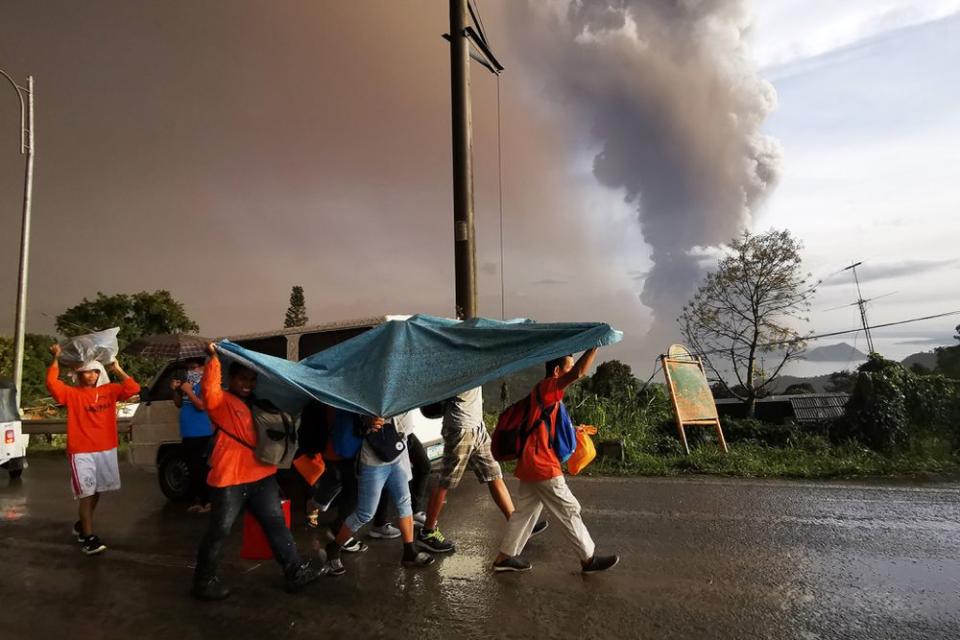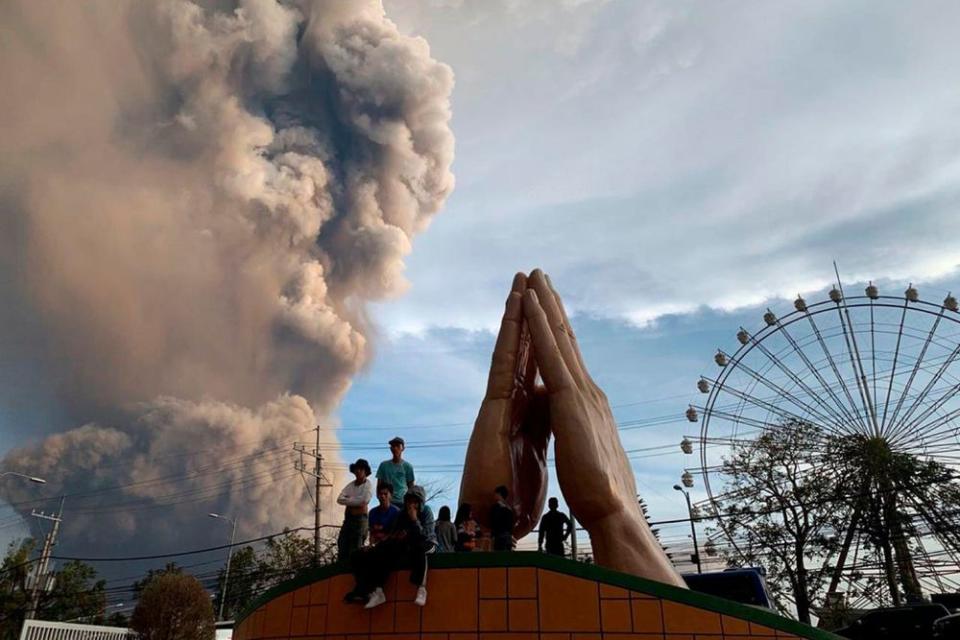Thousands of 'Panicking' Residents Flee as Philippines Volcano Spews Lava and Ash Near Manila

More than 30,000 people living in the Philippines have fled their homes after a volcano near the capital of Manila erupted, according to reports.
Clouds of ash, steam, and pebbles from the Taal volcano could be seen reaching more than six miles high on Monday, shortly after the region was hit by a series of earthquakes, according to the Philippine Institute of Volcanology and Seismology (PHIVOLCS).
Officials warned residents on Sunday that the Taal volcano was likely to experience a “hazardous eruption” after its alert level raised from a level 1 to a level 4 within hours.
That same day, the volcano’s clouds of ash reached 10 to 15 kilometers (6.21 to 9.3 miles) in the sky, the Philippine Institute of Volcanology and Seismology reported. On Monday, the clouds dropped to a height of about 2 kilometers (1.2 miles) but the volcano began to spew lava.

A time-lapse video of Taal Volcano, located in Batangas province, taken on 12 January when volcanic activity intensified and generated a tall steam-laden column of up to 15 km with volcanic lightning and wet ashfall that reached Metro Manila. (Video credit: I. Brinas-Pamintuan) pic.twitter.com/W5zTt6YOwG
— OCHA Philippines (@OCHAPhilippines) January 13, 2020
RELATED: Australian Mother and Her 20-Year-Old Daughter Confirmed Dead After New Zealand Volcano Eruption
Residents were immediately evacuated from their nearby villages by the Philippines’ United Nations Office for the Coordination of Humanitarian Affairs (OCHA), as the effects of the natural disaster swept across the country and polluted the air.
Flights were also delayed at Manila International Airport and schools were canceled, with motorists advised by PHIVOLCS officials to drive with “extreme caution” due to the poor visibility, while people were encouraged to wear face masks to avoid breathing problems.
The Philippines’ disaster-response agency and other officials reported on Monday that more than 30,000 villagers had fled their homes, and the number is reportedly expected to increase in the coming days. Provinces Batangas and Cavite were especially hit hard by the volcano, according to the Associated Press.
There were some, however, who were unable to flee due to a lack of transportation and poor visibility, according to the outlet. Others simply refused to leave their homes and farms, which Balete’s Mayor Wilson Maralit strongly advised against.
“We have a problem — our people are panicking due to the volcano because they want to save their livelihood, their pigs and herds of cows,” Maralit told DZMM radio, according to the Associated Press. “We’re trying to stop them from returning and warning that the volcano can explode again any time and hit them.”


The mayor, whose town is located along the shoreline of Taal Lake near the erupting volcano, also urged more troops and police to prevent people from attempting to go back to their villages.
There were no immediate reports of deaths or major damage from the volcano, which is the country’s second-most restive of its nearly two dozen active volcanoes, the Associated Press reported.
Despite the villages established there, the area surrounding Taal has been deemed a “permanent danger zone” after the volcano erupted in 1911 and killed approximately 1,500 people, according to NPR. It last erupted in 1977, the outlet reported.
In addition to volcanoes, the Philippines experience about 20 typhoons and other major storms per year, which the AP reports makes it “one of the world’s most disaster-prone countries.”
RELATED VIDEO: White Island Volcano Erupts in New Zealand
Given the high number of earthquakes that have struck the region so far, PHIVOLCS officials warned residents to stay alert as the area is likely to experience further eruptive activity in the coming days.
“DOST-PHIVOLCS strongly reiterates that total evacuation of the Volcano Island and high-risk areas within the 14-kilometer [8.7-mile] radius from the Taal Main Crater must be enforced,” officials wrote on Monday. “Population in areas in the southwest are advised to guard against the effects of heavy and prolonged ashfall.”
“DOST-PHIVOLCS is continually monitoring the eruption and will update all stakeholders of further developments,” they added.

